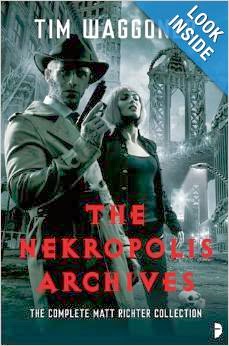Proud to say I have a story in this anthology (‘One Way Ticket’) – in
fact, one of the more complex stories I’ve written and one that I hope
operates on a few different levels. The Terror Train Anthology,
published by the good folk at James Ward Kirk Fiction,
includes both stories and poetry about murder, madness, mayhem,
monsters, and the macabre on the rails! The stories take us on a train
ride that begins in New York and ends in California, with a little time
in Europe, and includes over forty stops in between. Included in this
magnificent collection is one by the legendary William F. Nolan titled
“Lonely Train A Comin’.” The old west, a character that travels back in
time, a tale from the future – they are all there. We have stories full
of evil, revenge, love, lust, and mystery. We even have a little noir
and, of course, a whole lot of Horror! Trust me, it’s a ride you won’t
soon forget. The anthology has been getting lots of positive reviews, so be sure to check it out via the links at the end of this article.
TERROR TRAIN ANTHOLOGY
EDITED BY A. HENRY KEENE & KRISTA CLARK GRABOWSKI
All aboard theTerror Train
From NYC to New Orleans, through winding paths and cityscapes, it grinds the rails and shatters the dead of night. It comes, stopping at stations along the way, to steal the screaming souls of the living and the dead and transport them to hell… The Terror Train rides, from city to city, from village to village, through states, across rivers and mountains. If only it could tell its tales of grisly murder, of demonic pacts, black holes into different dimensions and portals to other realms where the ghosts of train robbers hunt in perpetuity for that elusive bullion filled carriage that cost them their immortal souls. Behold the terrors the train has witnessed, see firsthand the horrors it has lived through and when you get on board, pray, pray you’ve entered the right one, on the right track, the one that does not lead to oblivion…
Terror Train contains stories by new and established authors, with a special guest story by William F. Nolan. All aboard!
Grab your copy now!
UK LINK http://www.amazon.co.uk/Terror-Train-Mathias-Jansson-ebook/dp/B00KYWRWS2/ref=sr_1_1?s=digital-text&ie=UTF8&qid=1402748251&sr=1-1&keywords=terror+train
| Cover art by Stephen Cooney |
Full author list:
Roger Cowin
Charie D. La Marr
Michael Thomas-Knight
Mark Rigney
Stephen Alexander
Mike Jansen
Justin Hunter
Mary Genevieve Fortier
Jeremy Mays
Murphy Edwards
Dennis Banning
Brigitte Kephart
Brian Barnett
Mathias Jansson
Abdul-Qaadir Taariq Bakari-Muhammad
Aaron Besson
Stephen Alexander
Jim Goforth
Dona Fox
Tony Bowman
Rie Sheridan Rose
Dale Hollin
David S. Pointer
Stuart Keane
William Cook
Shenoa Carroll-Bradd
Stephen Alexander & Roger Cowin
A. P. Gilbert
Shane Koch
William F. Nolan
Teri Skultety
E.S. Wynn
Lori R. Lopez
Thomas M. Malafarina
Leigh M. Lane
Alex S. Johnson
Roger Cowin
Charie D. La Marr
Michael Thomas-Knight
Mark Rigney
Stephen Alexander
Mike Jansen
Justin Hunter
Mary Genevieve Fortier
Jeremy Mays
Murphy Edwards
Dennis Banning
Brigitte Kephart
Brian Barnett
Mathias Jansson
Abdul-Qaadir Taariq Bakari-Muhammad
Aaron Besson
Stephen Alexander
Jim Goforth
Dona Fox
Tony Bowman
Rie Sheridan Rose
Dale Hollin
David S. Pointer
Stuart Keane
William Cook
Shenoa Carroll-Bradd
Stephen Alexander & Roger Cowin
A. P. Gilbert
Shane Koch
William F. Nolan
Teri Skultety
E.S. Wynn
Lori R. Lopez
Thomas M. Malafarina
Leigh M. Lane
Alex S. Johnson
Plus Dedications and Appreciations by Keene and Grabowski
TRAILER
Terror Train is a wonderful collection full of great stories and poetry. You’ll be happily frightened as you ride the rails. As one of the author’s recently said “It’s a ride that’s to die for”.
ALTERNATE VERSION OF BOOK DESCRIPTION (NOT THE ONE ON AMAZON)
Terror Train is the creative brainchild of A. Henry Keene. The train leaves the station noir-style in New York and travels across the country until it stops in a California of the future. In between it stops in several states including Tennessee, Missouri, and Louisiana. At every stop there is a different tale of murder, ghosts, demons, and other horrors. There are tales of love gone wrong, twisted demon-possessed trains, a vampire story that is nothing like any vampire story you’ve ever read, and many other fun terrors. And the legendary William F. Nolan has humbled us with his gracious contribution. Along with the stories there are wonderful poems spread throughout this collection by some truly talented poets. Trust me, this is a ride you won’t soon forget.
LINKS
US LINK http://www.amazon.com/Terror-Train-Mathias-Jansson-ebook/dp/B00KYWRWS2/ref=la_B00HXO3FRG_1_3?s=books&ie=UTF8&qid=1402746042&sr=1-3UK LINK http://www.amazon.co.uk/Terror-Train-Mathias-Jansson-ebook/dp/B00KYWRWS2/ref=sr_1_1?s=digital-text&ie=UTF8&qid=1402748251&sr=1-1&keywords=terror+train
https://www.goodreads.com/book/show/22457461-terror-train?from_search=true









